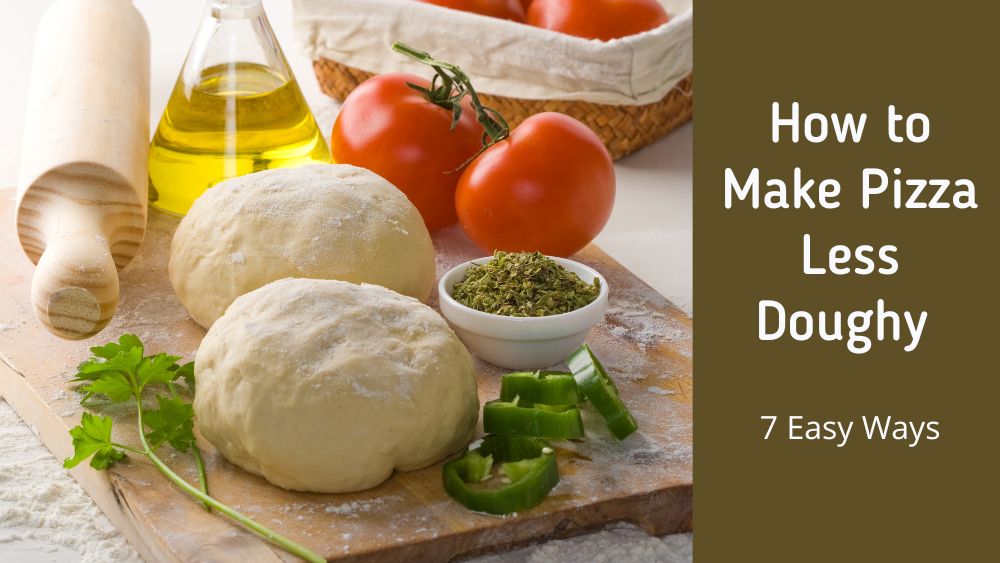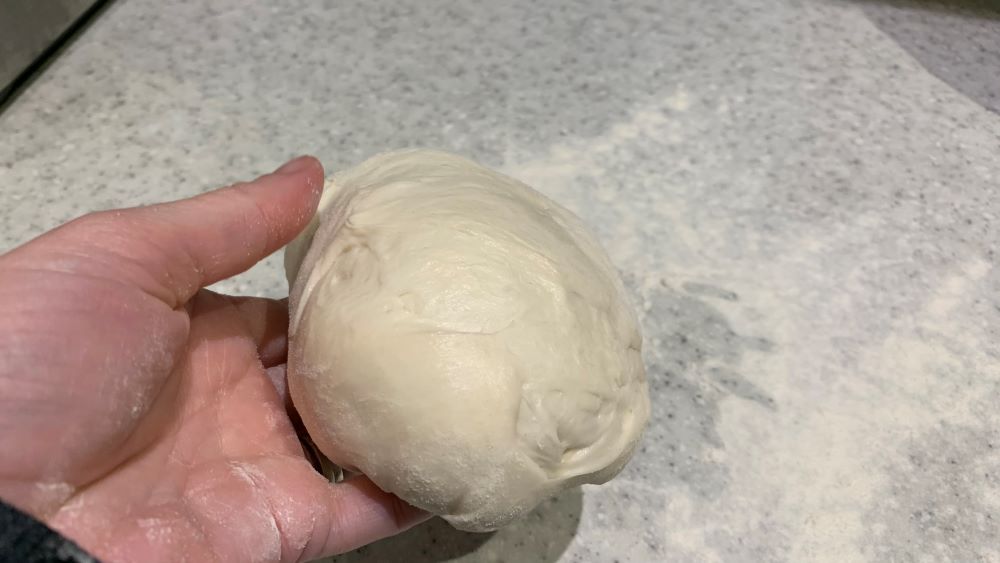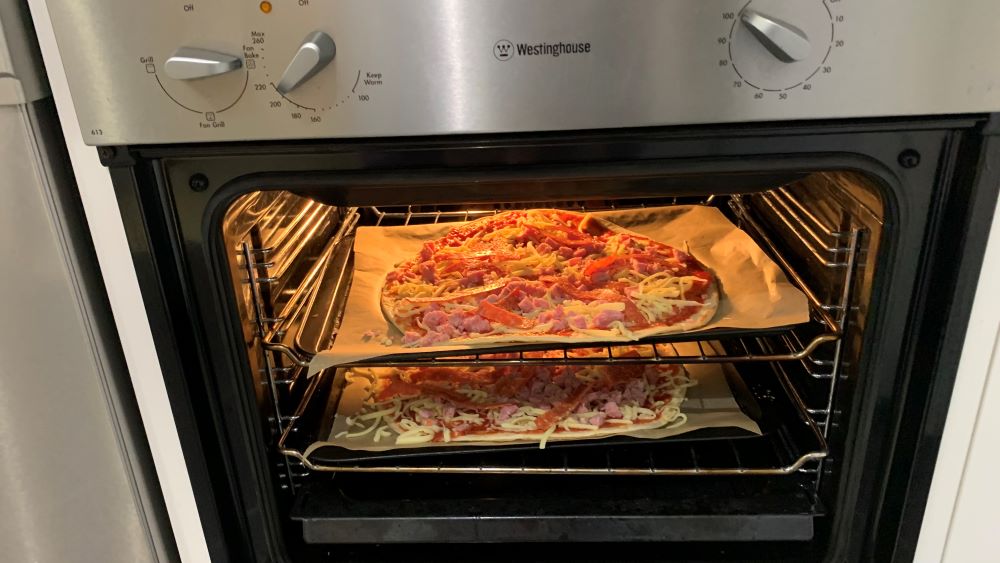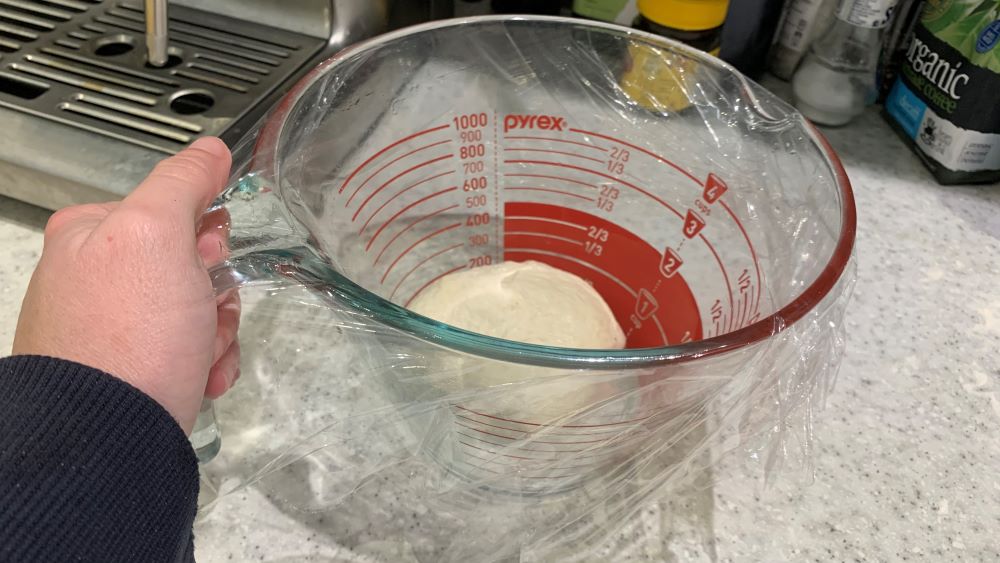Making the best pizza starts with making the best pizza dough, but that is sometimes more challenging than you might think.
Much like making bread, making good pizza dough requires the right steps and the right high-quality ingredients. Sometimes, pizza dough gets soggy or doughy, especially in the middle.
To make pizza less doughy it is important to use good quality flour, set the oven temperature high, make sure the dough is at room temperature before cooking and avoid covering the pizza with too many wet toppings.

This article will explore what causes doughy pizza and how you can avoid this happening to your next pizza.
7 Causes of Doughy Pizza and Solutions
Preventing your pizza dough from getting soggy can be done in a few steps. Let’s take a look at how you can prevent your pizza dough from being too doughy or soggy.
1. Make Sure You Use the Right Flour
If you want a nice crisp crust instead of a doughy one, the best thing to do is use 100% white flour. Use a good quality bakers flower so that the gluten develops well and the dough become stretchy.
To increase the fiber content you can exchange some of the white flour for wholemeal or wholegrain. To avoid your pizza tasting too to doughy avoid using more than 50% wholemeal flour in your recipe.

2. Be Careful With Your Oven Temperature
Many people know that pizza always cooks better in very high oven temperatures. Commercial pizza ovens are often set to 700 degrees Fahrenheit and will cook the pizza rapidly from the base and the top.
When cooking thicker based pizzas at home it is important to lower the temperature slightly and cook the pizza for longer. This will allow the dough to cook all the way through before the cheese or other toppings start to burn.

You also need to make sure the bottom as well as the top of the pizza pan is hot enough to cook the pizza properly, which is why preheating your pan in the oven is so important.
Pizza stones work well for this and can help the pizza to form a crispy crust on the bottom.
3. Make Sure the Dough Is at Room Temperature
If you proof your pizza dough in the refrigerator overnight make sure to bring it to room temperature before baking.
Let it sit out on the countertop for one or 2 hours so that it is no longer cold before you put the pizza in the oven.

When pizza dough is cold, it takes longer to cook, which means the dough may not cook through by the time the toppings are done.
This unevenness is one of the reasons for a doughy crust, but you can avoid it by making sure the dough is at room temperature before you work with it.
4. Avoid using Too Many Wet Ingredients
Tomato sauce and vegetable toppings including onions, mushrooms and bell peppers can have a lot of moisture in them. Adding too many wet ingredients can cause the dough to become soggy and taste doughy.
If your tomato sauce is runny, place it in a sieve and stir it with a wooden spoon. This will cause the extra moisture to fall out of the bottom

Also, consider precooking your veggies before putting them on the pizza so that most of the moisture is cooked out of them. Don’t add too many veggies because this can cause the pizza to come out doughy.
5. Never Add the Sauce Too Early
When you add your tomato sauce, wait until right before you put the pizza in the oven. Otherwise, it can cause the dough to be too wet, which can make it soggy.
You can also brush a light layer of olive oil on the dough before placing the sauce on it, which acts as a type of waterproof barrier and stops too much sauce from penetrating the dough.
6. Be Careful with the Temperature and Cooking Time
Finding the perfect balance between the right oven temperature and the total cooking time is crucial. Some people, especially those who have had trouble with soggy pizza in the past, will cook their pizza at a temperature that is too low or won’t cook the pizza long enough.
Pizzas can take anywhere from 1-3 minutes in an outdoor pizza oven up to 20 minutes in an indoor convection oven. My oven at home cooks pizza in around 10 minutes if the base is already up to room temperature. Preheat the oven and use a pizza stone if you have one.
7. Don’t Put Too Many Toppings on the Pizza
Whether the toppings are wet or dry, putting too many of them on top of your pizza can make the pizza taste very doughy.
This is especially important when you’re making a pizza with a thin crust. Aim for 3 main toppings and spread them out evenly. You will be able to taste each one and they won’t ruin your crust.

Why Is My Pizza Doughy in the Middle?
Numerous things can make the dough soggy in the middle, including:
- The cooking time was too short.
- The oven wasn’t hot enough.
- THe ingredients contained a lot of moisture like fresh mushrooms or peppers
- The base of the crust is too thick.
- You didn’t use a metal pan or a pizza stone.
- The oven wasn’t preheated.
How Do You Make Pizza Dough Less Gooey?
Using the right baking sheet (stones are perfect for cooking pizza), cooking the pizza long enough and at the right temperature, not including too many ingredients, and using more “hard” cheeses rather than soft cheeses are all good tips if you want your pizza dough to come out less gooey in the end.
How Do You Fix Pizza Dough That Is Too Sticky?
Sticky dough is a common problem when making homemade pizza, and the main reason for this problem is the improper balance of flour and water.
Always follow the recipe to the letter for the best results, and if the dough is too sticky, add just a tiny bit of flour and re-knead the dough until it springs back.
How to Make Pizza Less Doughy | Summary
Pizza dough is fun to make at home and is a great way to cook with kids. To avoid your pizza tasting to doughy, avoid keeping the crust too thick, preheat the oven before cooking and try baking it on a pizza stone.
Adding fewer wet ingredients is a good way to avoid excess moisture that can cause your dough to get doughy and sticky.
Happy cooking.
I am an accredited practicing dietitian, experienced gardener and a dedicated cook. I love writing and sharing my experience so you can learn from my successes and mistakes.
